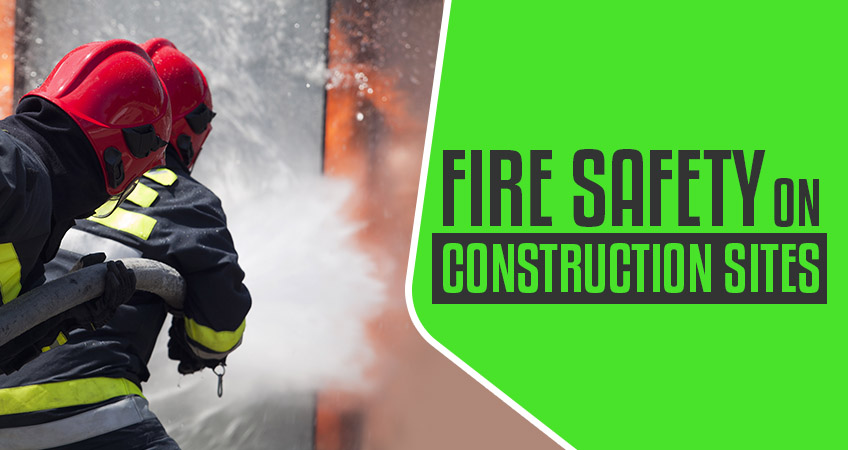Fire hazards are among the most significant risks on construction sites, and the consequences can be devastating. High-profile incidents, such as the 2019 Notre-Dame fire or the Copenhagen Stock Exchange blaze in 2024, remind us just how quickly fires can destroy months, or even years, of work.
At B-Mat Scaffolding, safety is at the heart of everything we do, and ensuring fire hazards are minimised is a vital part of that promise.
This blog equips you with knowledge to identify and address fire risks effectively. From understanding what constitutes a fire hazard in the construction industry to actionable prevention strategies, we’re breaking it all down for you—and even highlighting the unique considerations when it comes to scaffolding safety.
Understanding fire hazards on construction sites
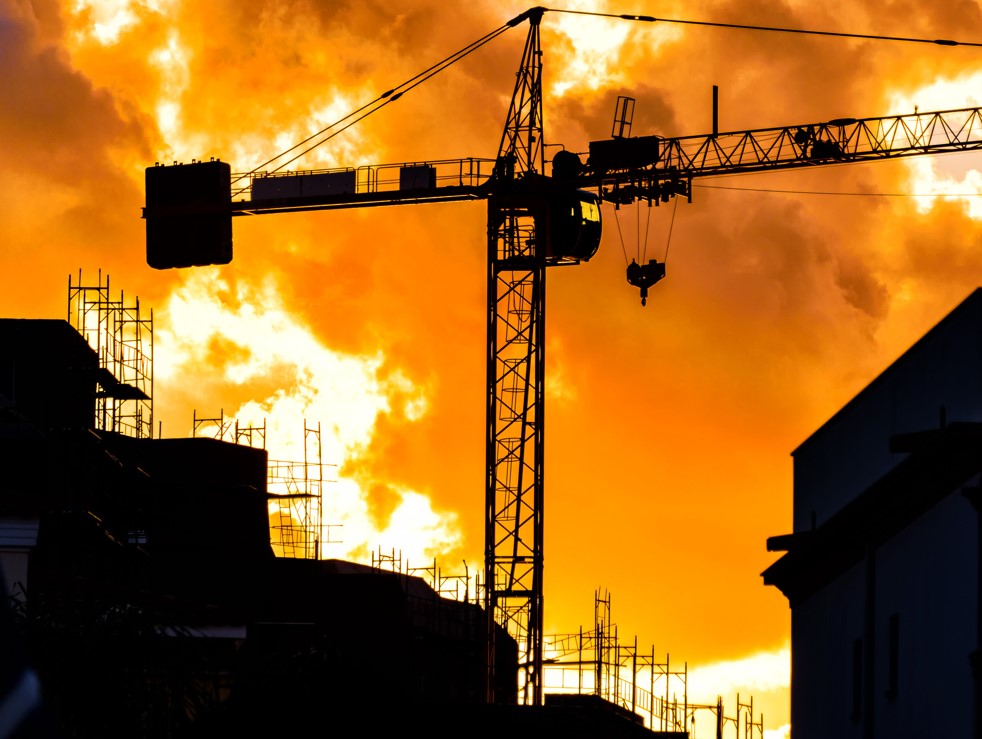
Construction sites naturally present a myriad of fire risks.
Here’s a look at some of the most common issues faced daily on building sites:
Electrical faults
Loose wiring, short circuits, and overloaded systems are leading causes of fires on construction sites. Without proper installation or regular inspection, hazardous electrical faults can quickly escalate into something far more dangerous.
Hot work equipment
Hot work, such as welding, cutting, and grinding, generates sparks, heat, and potentially smouldering bits of material. These can ignite flammable substances like wood, paper, or certain chemicals, leading to rapid fire outbreaks.
Human error
Small actions can have big consequences. Carelessly discarded cigarette butts or the unauthorised use of open flames can result in uncontrollable fires if not managed with strict protocols. That’s why it’s always essential to follow fire safety regulations on construction and demolition sites to prevent the need for an urgent call out to fire and rescue teams.
Temporary lighting and portable heaters
Construction work often requires temporary lights or heaters. These devices, particularly halogen lamps or portable heaters, can give off significant heat. If placed near flammable objects, they can ignite fires with ease.
Understanding these risks is the first step in addressing them—and that’s where preventive measures come in.
Strategies for fire prevention
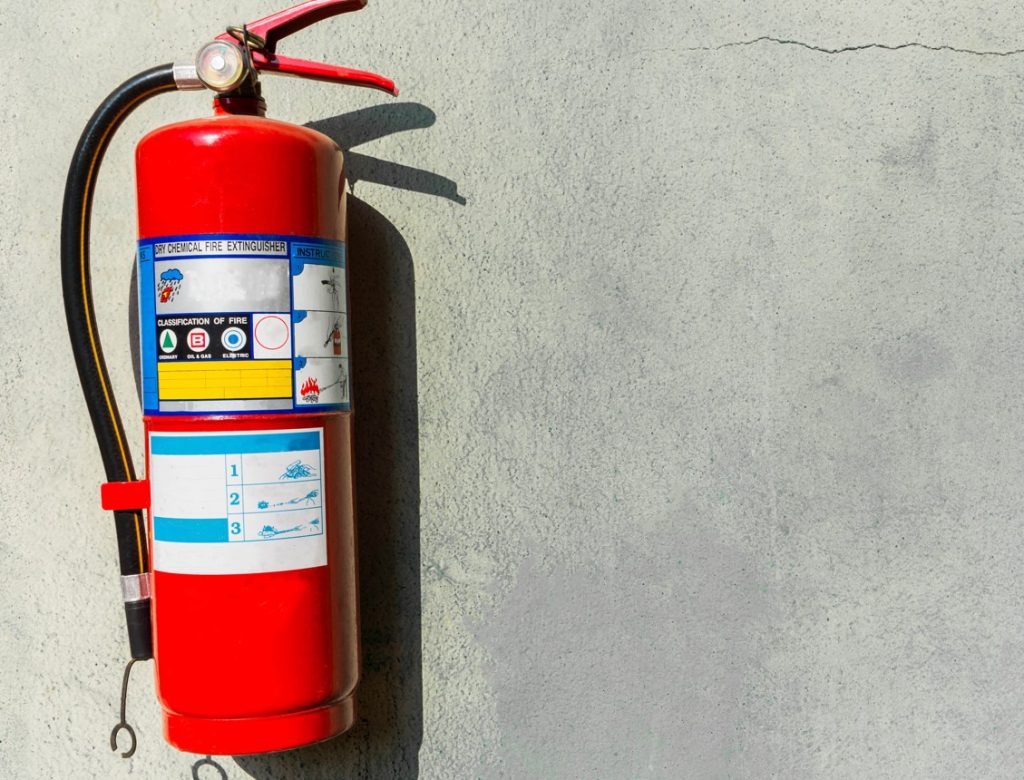
Prevention begins with eliminating fire risks through a combination of best practices, vigilance, and proper training.
These actionable strategies can improve fire safety in construction:
1. Ensure professional electrical installations
All electrical installations should be carried out by certified professionals. Wiring and systems must be tested, inspected, and commissioned before use, and should be reviewed periodically to ensure safety standards are being met. Dangling or exposed wires should be corrected immediately to eliminate potential hazards.
2. Implement hot work safety controls
Hot work should only be carried out by trained personnel and in controlled environments. Establish pre-approved procedures for hot work, such as using welding screens, fire-resistant blankets, or containment zones. Always ensure fire extinguishers are close by and conduct regular checks to confirm these precautions remain in place.
3. Designate smoking zones
Smoking should be restricted to clearly marked, designated smoking areas located far from flammable materials. Provide suitable ashtrays or disposal units to prevent stray cigarette butts from becoming a fire risk.
4. Secure lighting and heaters
Temporary construction lights and portable heaters must be positioned safely. Avoid high-risk items like halogen lamps in favour of lower-heat alternatives such as LED lamps. Always keep these devices away from flammable substances and ensure they’re securely in place to avoid accidental repositioning.
5. Keep waste materials away from ignition and fuel sources
Waste from building materials can build up quickly on construction sites, providing ample fuel for potential fires. It is essential to have a designated waste disposal system in place and regularly remove any combustible debris from the site to reduce the chances of this potential fire hazard from occurring.
6. Ensure suitable fire extinguishers are on site and readily available
Fire extinguishers should be placed at strategic points around the site, easily accessible in case of an emergency. They should be inspected and maintained regularly to ensure they are functional and ready for use.
Scaffolding fire safety
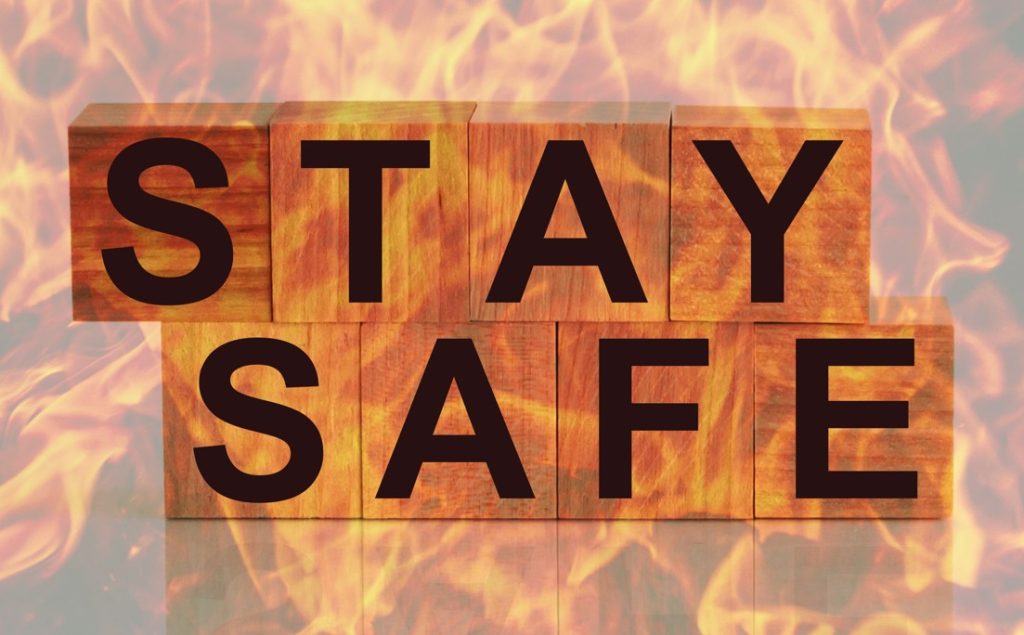
While scaffolding is often thought of as related to physical safety, it also comes with unique fire hazards that must not be overlooked. Fires occurring on or near scaffolding can jeopardise the stability of the structure, putting workers’ lives at risk and severely delaying progress on a project.
Unique scaffolding fire risks
- Flammable scaffolding materials – Wooden planks or boards used in scaffolding systems can be vulnerable to fire if not treated with flame retardants.
- Hot work near scaffolding – Sparks or heat from operations like welding near scaffolding can ignite wood or compromise materials.
- Improper storage – Storing hazardous materials or flammable liquids near scaffolding creates unnecessary risks.
Preventative measures
- Treat scaffolding planks or boards with flame-resistant coatings.
- Ensure no activities involving hot work take place near scaffolding without protective barriers.
- Establish clear no-storage zones around scaffolding to keep any flammable substances or combustible materials at a safe distance.
By addressing these specific challenges, you’ll ensure scaffolding remains safe and stable throughout your project.
Five golden rules for construction fire safety
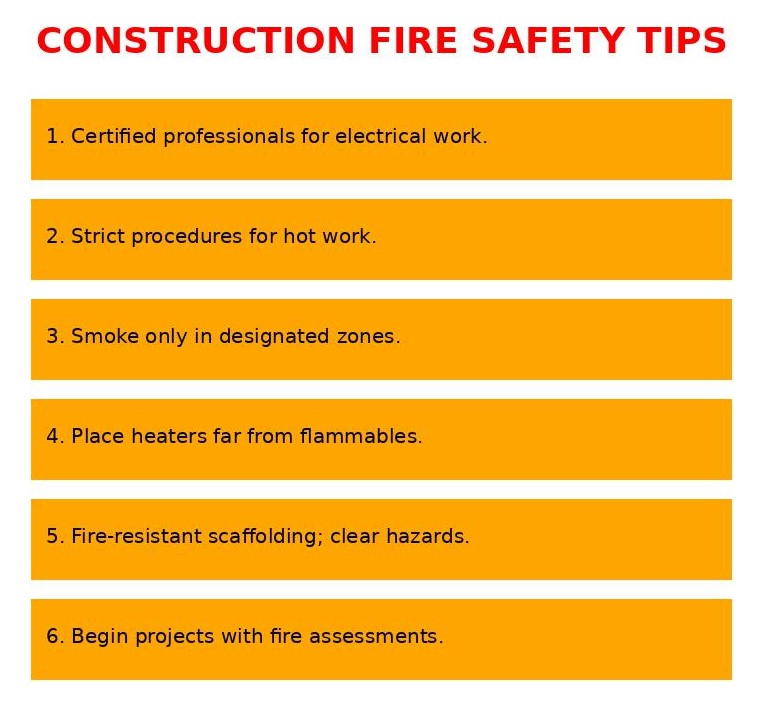
Summarising the essentials, here are five fire prevention principles your site should live by:
- Electrical installations should always be handled by certified professionals with routine inspections.
- Hot work should follow strict procedural guidelines; only trained workers should handle it.
- Smoking is only permitted in designated areas with proper disposal systems.
- Temporary lights and heaters must be placed far from flammable objects and secured to prevent accidental impact.
- Scaffolding must be pre-treated for fire resistance and kept clear of hazards like hot work or poorly stored materials.
- Ensure a fire risk assessment is performed at the beginning of every new project. A
These principles form a strong foundation to protect every worker, piece of equipment, and inch of progress on-site.
Additional resources for fire safety on construction projects
If you’re keen to make fire prevention a top priority, here are some useful resources:
- Local regulations and fire codes – Always adhere to your country or area’s fire safety laws applicable to construction projects.
- Fire Safety Toolbox Talks – Regular safety briefings can educate your team on fire hazards, prevention, and emergency procedures.
- Fire safety equipment suppliers – Ensure your site is fully equipped with fire extinguishers, sprinkler systems, and protective gear from reliable suppliers.
Building a safer future
Fire safety on construction sites isn’t just a legal compliance issue—it’s a moral and practical responsibility. Every worker, site manager, and safety officer has a duty to prioritise prevention and protect all stakeholders involved.
At B-Mat Scaffolding, we take this responsibility seriously. Whether it’s through our high-quality flame-resistant scaffolding options or industry insights like this blog, we’re here to help you create safer, more secure construction environments.
To learn more about our scaffolding solutions and their role in site safety, get in touch with us today. Together, we can build a future defined by safety and progress.


